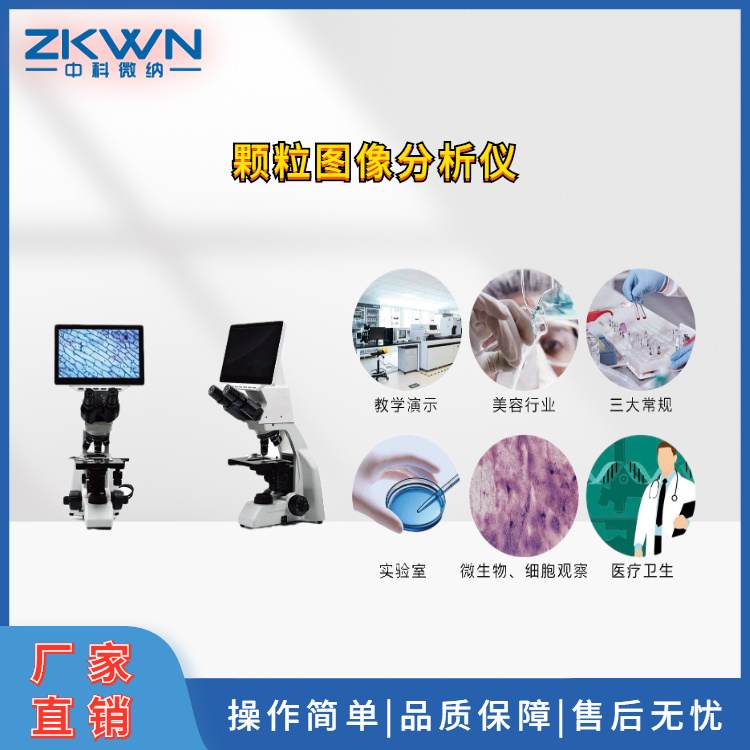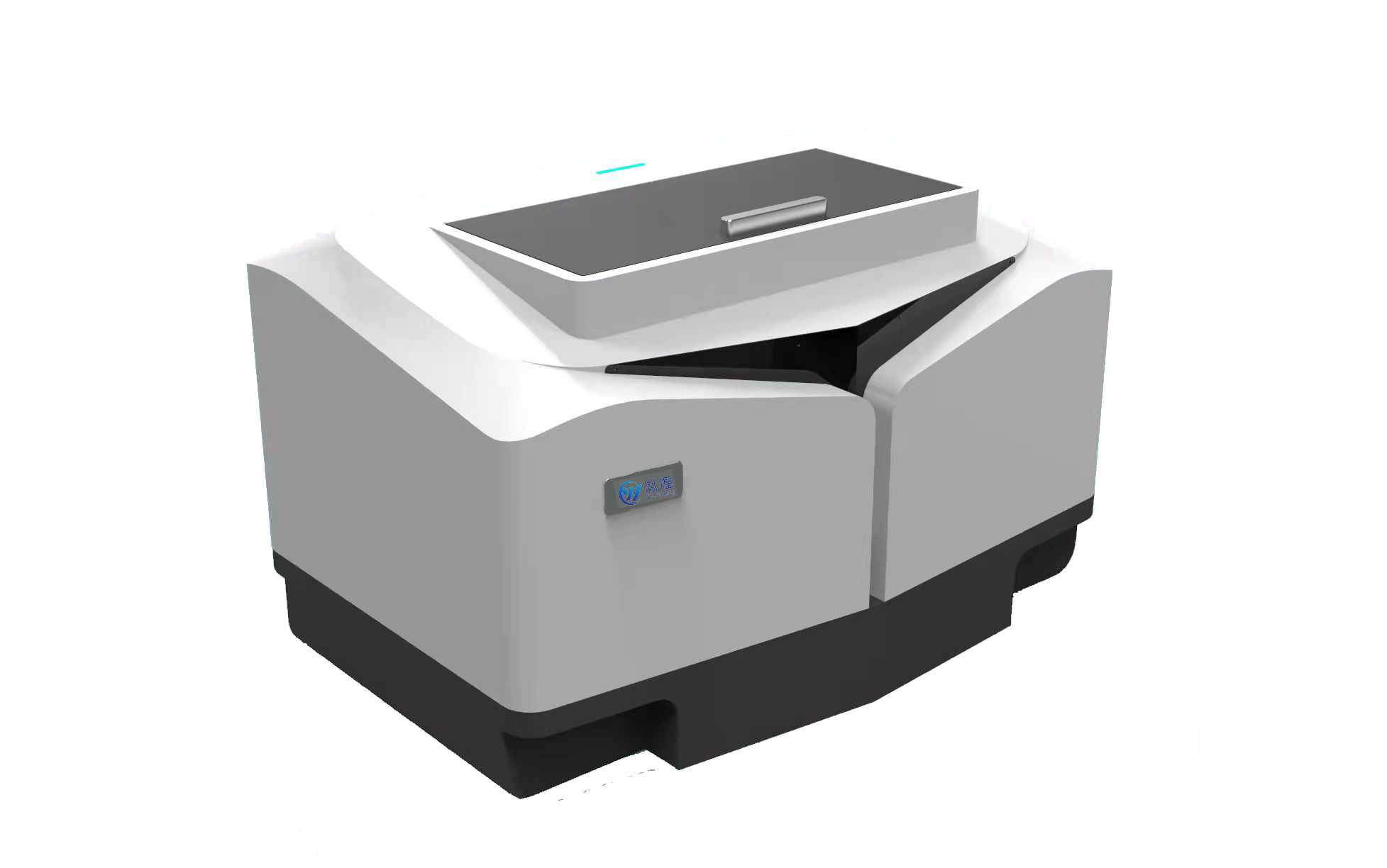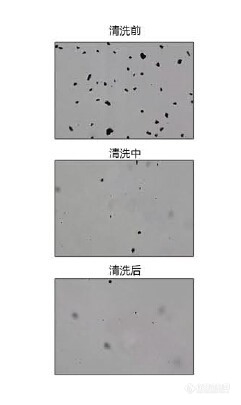杨正红:静态图像法粒度和形貌分析技术在药品质量控制中的应用
p style=" text-align: justify text-indent: 2em " 药物生产中的关键工艺参数是影响药物和剂型理化性质和生物药剂学性质的重要因素。原料药粉末的大小和晶体形状影响其流动性和压实性能:粒径大且球形度好的颗粒通常比颗粒小但长宽比大的颗粒更容易流动;小颗粒溶解更迅速,并且比大颗粒的悬浮液粘度更高 span style=" text-indent: 2em " 。因此,各国药典中都对相关药物所涉及的粒度问题及测量方法做出了规定。 /span /p p style=" text-align: justify text-indent: 2em " 有关粒度测定的测定方法是随着科学的发展和计算机技术的飞速进步逐渐发展起来的,包括:筛分法、显微镜法、电阻法和光阻法、以及目前非常流行的激光衍射法(光散射法)等(1,2)。然而,随着计算机功能日益强大,数字化图像分辨和提取技术不断提高,可以同时具备上述各种方法能力,可以测量粒度分布、粒形分布,可以准确计数的图像法粒度粒形分析仪正在走向舞台中央(2)。 /p h1 label=" 标题居中" style=" font-size: 32px font-weight: bold border-bottom: 2px solid rgb(204, 204, 204) padding: 0px 4px 0px 0px text-align: center margin: 0px 0px 20px " span style=" font-size: 18px font-family: 宋体, SimSun color: rgb(0, 176, 80) " strong 一、& nbsp 中国药典中所涉及的药物粒度及测定方法 /strong /span /h1 p style=" text-align: justify text-indent: 2em " 中国药典2020年版四部在通则0982 《粒度和粒度分布测定法》中规定了以下测定方法: /p p style=" text-align: justify text-indent: 2em " 1.& nbsp 第一法(显微镜法),用于测定药物制剂的粒子大小或限度。 /p p style=" text-align: justify text-indent: 2em " 2.& nbsp 第二法(筛分法):用于测定药物制剂的粒子大小或限度,粒度下限在75μm左右的样品。 /p p style=" text-align: justify text-indent: 2em " 3.& nbsp 第三法(光散射法):即激光衍射法。根据ISO13320-2009,该方法用于测定原料药或药物制剂的粒度分布,适用的粒度范围大约为0.1 μm~3 mm。 /p p style=" text-align: justify text-indent: 2em " & nbsp /p p style=" text-align: center text-indent: 2em " strong 在中国药典中涉及粒度的药物包括中药、丸药、颗粒剂、外敷软膏、滴眼液、抗生素等, /strong /p p style=" text-indent: 2em text-align: center " strong 如下表 /strong /p table border=" 1" cellspacing=" 0" style=" margin-left: 28px border: none" tbody tr class=" firstRow" td width=" 198" valign=" top" colspan=" 3" style=" border: 1px solid rgb(0, 0, 0) padding: 5px " p style=" text-align:center" span style=" font-family:等线 font-size:12px" 中国药典一部 /span /p /td td width=" 198" valign=" top" colspan=" 3" style=" border: 1px solid rgb(0, 0, 0) padding: 5px " p style=" text-align:center" span style=" font-family:等线 font-size:12px" 中国药典二部 /span /p /td td width=" 198" valign=" top" colspan=" 3" style=" border: 1px solid rgb(0, 0, 0) padding: 5px " p style=" text-align:center" span style=" font-family:等线 font-size:12px" 中国药典三部 /span /p /td /tr tr td width=" 85" valign=" top" style=" border: 1px solid rgb(0, 0, 0) padding: 5px " p style=" text-align:center" span style=" font-family:等线 font-size:14px" 药品名 /span /p /td td width=" 47" valign=" top" style=" border: 1px solid rgb(0, 0, 0) padding: 5px " p style=" text-align:center" span style=" font-family:等线 font-size:12px" 所 /span span style=" font-family:等线 font-size:12px" 载 /span span style=" font-family:等线 font-size:12px" 页数 /span /p /td td width=" 66" valign=" top" style=" border: 1px solid rgb(0, 0, 0) padding: 5px " p style=" text-align:center" span style=" font-family:等线 font-size:12px" 粒度 /span span style=" font-family:等线 font-size:12px" 测定方法 /span span style=" font-family:等线 font-size:12px" 要求 /span /p /td td width=" 85" valign=" top" style=" border: 1px solid rgb(0, 0, 0) padding: 5px word-break: break-all " p style=" text-align:center" span style=" font-family:等线 font-size:12px" 药品名 /span /p /td td width=" 47" valign=" top" style=" border: 1px solid rgb(0, 0, 0) padding: 5px " p style=" text-align:center" span style=" font-family:等线 font-size:12px" 所 /span span style=" font-family:等线 font-size:12px" 载 /span span style=" font-family:等线 font-size:12px" 页数 /span /p /td td width=" 66" valign=" top" style=" border: 1px solid rgb(0, 0, 0) padding: 5px " p style=" text-align:center" span style=" font-family:等线 font-size:12px" 粒度 /span span style=" font-family:等线 font-size:12px" 测定方法 /span span style=" font-family:等线 font-size:12px" 要求 /span /p /td td width=" 85" valign=" top" style=" border: 1px solid rgb(0, 0, 0) padding: 5px " p style=" text-align:center" span style=" font-family:等线 font-size:12px" 通则 /span /p /td td width=" 47" valign=" top" style=" border: 1px solid rgb(0, 0, 0) padding: 5px " p style=" text-align:center" span style=" font-family:等线 font-size:12px" 所 /span span style=" font-family:等线 font-size:12px" 载 /span span style=" font-family:等线 font-size:12px" 页数 /span /p /td td width=" 66" valign=" top" style=" border: 1px solid rgb(0, 0, 0) padding: 5px " p style=" text-align:center" span style=" font-family:等线 font-size:12px" 粒度 /span span style=" font-family:等线 font-size:12px" 测定方法 /span span style=" font-family:等线 font-size:12px" 要求 /span /p /td /tr tr td width=" 85" valign=" top" style=" border: 1px solid rgb(0, 0, 0) padding: 5px " p span style=" font-family:等线 font-size:10px" 人参茎叶总皂苷 /span /p /td td width=" 47" valign=" top" style=" border: 1px solid rgb(0, 0, 0) padding: 5px " p span style=" font-family:等线 font-size:10px" 389 /span /p /td td width=" 66" valign=" top" style=" border: 1px solid rgb(0, 0, 0) padding: 5px " p span style=" font-family:等线 font-size:10px" 第二法 /span /p /td td width=" 85" valign=" top" style=" border: 1px solid rgb(0, 0, 0) padding: 5px " p span style=" font-family:等线 font-size:10px" 灰黄霉素 /span /p /td td width=" 47" valign=" top" style=" border: 1px solid rgb(0, 0, 0) padding: 5px " p span style=" font-family:等线 font-size:10px" 351 /span /p /td td width=" 66" valign=" top" style=" border: 1px solid rgb(0, 0, 0) padding: 5px " p span style=" font-family:等线 font-size:10px" 第一法 /span /p /td td width=" 85" valign=" top" style=" border: 1px solid rgb(0, 0, 0) padding: 5px " p span style=" font-family:等线 font-size:10px" 0104颗粒剂 /span /p /td td width=" 47" valign=" top" style=" border: 1px solid rgb(0, 0, 0) padding: 5px " br/ /td td width=" 66" valign=" top" style=" border: 1px solid rgb(0, 0, 0) padding: 5px " p span style=" font-family:等线 font-size:10px" 第二法 /span /p /td /tr tr td width=" 85" valign=" top" style=" border: 1px solid rgb(0, 0, 0) padding: 5px " p span style=" font-family:等线 font-size:10px" 人参总皂苷 /span /p /td td width=" 47" valign=" top" style=" border: 1px solid rgb(0, 0, 0) padding: 5px " p span style=" font-family:等线 font-size:10px" 391 /span /p /td td width=" 66" valign=" top" style=" border: 1px solid rgb(0, 0, 0) padding: 5px " p span style=" font-family:等线 font-size:10px" 第二法 /span /p /td td width=" 85" valign=" top" style=" border: 1px solid rgb(0, 0, 0) padding: 5px " p span style=" font-family:等线 font-size:10px" 曲安奈德注射液 /span /p /td td width=" 47" valign=" top" style=" border: 1px solid rgb(0, 0, 0) padding: 5px " p span style=" font-family:等线 font-size:10px" 362 /span /p /td td width=" 66" valign=" top" style=" border: 1px solid rgb(0, 0, 0) padding: 5px " p span style=" font-family:等线 font-size:10px" 第一法 /span /p /td td width=" 85" valign=" top" style=" border: 1px solid rgb(0, 0, 0) padding: 5px " p span style=" font-family:等线 font-size:10px" 0105眼用制剂 /span /p /td td width=" 47" valign=" top" style=" border: 1px solid rgb(0, 0, 0) padding: 5px " br/ /td td width=" 66" valign=" top" style=" border: 1px solid rgb(0, 0, 0) padding: 5px " p span style=" font-family:等线 font-size:10px" 第一法 /span /p /td /tr tr td width=" 85" valign=" top" style=" border: 1px solid rgb(0, 0, 0) padding: 5px " p span style=" font-family:等线 font-size:10px" 心脑欣丸 /span /p /td td width=" 47" valign=" top" style=" border: 1px solid rgb(0, 0, 0) padding: 5px " p span style=" font-family:等线 font-size:10px" 722 /span /p /td td width=" 66" valign=" top" style=" border: 1px solid rgb(0, 0, 0) padding: 5px " p span style=" font-family:等线 font-size:10px" 第二法 /span /p /td td width=" 85" valign=" top" style=" border: 1px solid rgb(0, 0, 0) padding: 5px " p span style=" font-family:等线 font-size:10px" 阿莫西林克拉维酸钾颗粒 /span /p /td td width=" 47" valign=" top" style=" border: 1px solid rgb(0, 0, 0) padding: 5px " p span style=" font-family:等线 font-size:10px" 437 /span /p /td td width=" 66" valign=" top" style=" border: 1px solid rgb(0, 0, 0) padding: 5px " p span style=" font-family:等线 font-size:10px" 第二法 /span /p /td td width=" 85" valign=" top" style=" border: 1px solid rgb(0, 0, 0) padding: 5px " p span style=" font-family:等线 font-size:10px" 0109软膏剂 /span span style=" font-family:等线 font-size:10px" 、 /span span style=" font-family:等线 font-size:10px" 乳膏剂 /span /p /td td width=" 47" valign=" top" style=" border: 1px solid rgb(0, 0, 0) padding: 5px " br/ /td td width=" 66" valign=" top" style=" border: 1px solid rgb(0, 0, 0) padding: 5px " p span style=" font-family:等线 font-size:10px" 第一法 /span /p /td /tr tr td width=" 85" valign=" top" style=" border: 1px solid rgb(0, 0, 0) padding: 5px " p span style=" font-family:等线 font-size:10px" 冰黄 /span span style=" font-family:等线 font-size:10px" K /span span style=" font-family:等线 font-size:10px" 乐软膏 /span /p /td td width=" 47" valign=" top" style=" border: 1px solid rgb(0, 0, 0) padding: 5px " p span style=" font-family:等线 font-size:10px" 865 /span /p /td td width=" 66" valign=" top" style=" border: 1px solid rgb(0, 0, 0) padding: 5px " p span style=" font-family:等线 font-size:10px" 第一法 /span /p /td td width=" 85" valign=" top" style=" border: 1px solid rgb(0, 0, 0) padding: 5px " p span style=" font-family:等线 font-size:10px" 蒙脱石 /span /p /td td width=" 47" valign=" top" style=" border: 1px solid rgb(0, 0, 0) padding: 5px " p span style=" font-family:等线 font-size:10px" 1452 /span /p /td td width=" 66" valign=" top" style=" border: 1px solid rgb(0, 0, 0) padding: 5px " p span style=" font-family:等线 font-size:10px" 第三法 /span /p /td td width=" 85" valign=" top" style=" border: 1px solid rgb(0, 0, 0) padding: 5px " p span style=" font-family:等线 font-size:10px" 0114凝胶剂 /span /p /td td width=" 47" valign=" top" style=" border: 1px solid rgb(0, 0, 0) padding: 5px " br/ /td td width=" 66" valign=" top" style=" border: 1px solid rgb(0, 0, 0) padding: 5px " p span style=" font-family:等线 font-size:10px" 第一法 /span /p /td /tr tr td width=" 85" valign=" top" style=" border: 1px solid rgb(0, 0, 0) padding: 5px " p span style=" font-family:等线 font-size:10px" 妇乐颗粒 /span /p /td td width=" 47" valign=" top" style=" border: 1px solid rgb(0, 0, 0) padding: 5px " p span style=" font-family:等线 font-size:10px" 896 /span /p /td td width=" 66" valign=" top" style=" border: 1px solid rgb(0, 0, 0) padding: 5px " p span style=" font-family:等线 font-size:10px" 第二法 /span /p /td td width=" 85" valign=" top" style=" border: 1px solid rgb(0, 0, 0) padding: 5px " p span style=" font-family:等线 font-size:10px" 蒙脱石分散片 /span /p /td td width=" 47" valign=" top" style=" border: 1px solid rgb(0, 0, 0) padding: 5px " p span style=" font-family:等线 font-size:10px" 1454 /span /p /td td width=" 66" valign=" top" style=" border: 1px solid rgb(0, 0, 0) padding: 5px " p span style=" font-family:等线 font-size:10px" 第二法 /span /p /td td width=" 85" valign=" top" style=" border: 1px solid rgb(0, 0, 0) padding: 5px " p span style=" font-family:等线 font-size:10px" 0115散剂 /span /p /td td width=" 47" valign=" top" style=" border: 1px solid rgb(0, 0, 0) padding: 5px " br/ /td td width=" 66" valign=" top" style=" border: 1px solid rgb(0, 0, 0) padding: 5px " p span style=" font-family:等线 font-size:10px" 第二法 /span /p /td /tr tr td width=" 85" valign=" top" style=" border: 1px solid rgb(0, 0, 0) padding: 5px " p span style=" font-family:等线 font-size:10px" 京万红软膏 /span /p /td td width=" 47" valign=" top" style=" border: 1px solid rgb(0, 0, 0) padding: 5px " p span style=" font-family:等线 font-size:10px" 1106 /span /p /td td width=" 66" valign=" top" style=" border: 1px solid rgb(0, 0, 0) padding: 5px " p span style=" font-family:等线 font-size:10px" 第一法 /span /p /td td width=" 85" valign=" top" style=" border: 1px solid rgb(0, 0, 0) padding: 5px " p span style=" font-family:等线 font-size:10px" 蒙脱石散 /span /p /td td width=" 47" valign=" top" style=" border: 1px solid rgb(0, 0, 0) padding: 5px " p span style=" font-family:等线 font-size:10px" 1455 /span /p /td td width=" 66" valign=" top" style=" border: 1px solid rgb(0, 0, 0) padding: 5px " p span style=" font-family:等线 font-size:10px" 第二法 /span /p /td td width=" 85" valign=" top" style=" border: 1px solid rgb(0, 0, 0) padding: 5px " br/ /td td width=" 47" valign=" top" style=" border: 1px solid rgb(0, 0, 0) padding: 5px " br/ /td td width=" 66" valign=" top" style=" border: 1px solid rgb(0, 0, 0) padding: 5px " br/ /td /tr tr td width=" 85" valign=" top" style=" border: 1px solid rgb(0, 0, 0) padding: 5px " p span style=" font-family:等线 font-size:10px" 逍遥颗粒 /span /p /td td width=" 47" valign=" top" style=" border: 1px solid rgb(0, 0, 0) padding: 5px " p span style=" font-family:等线 font-size:10px" 1 /span span style=" font-family:等线 font-size:10px" 358 /span /p /td td width=" 66" valign=" top" style=" border: 1px solid rgb(0, 0, 0) padding: 5px " p span style=" font-family:等线 font-size:10px" 第二法 /span /p /td td width=" 85" valign=" top" style=" border: 1px solid rgb(0, 0, 0) padding: 5px " p span style=" font-family:等线 font-size:10px" 醋酸甲羟孕酮混悬注射液 /span /p /td td width=" 47" valign=" top" style=" border: 1px solid rgb(0, 0, 0) padding: 5px " p span style=" font-family:等线 font-size:10px" 1529 /span /p /td td width=" 66" valign=" top" style=" border: 1px solid rgb(0, 0, 0) padding: 5px " p span style=" font-family:等线 font-size:10px" 第一法 /span /p /td td width=" 85" valign=" top" style=" border: 1px solid rgb(0, 0, 0) padding: 5px " br/ /td td width=" 47" valign=" top" style=" border: 1px solid rgb(0, 0, 0) padding: 5px " br/ /td td width=" 66" valign=" top" style=" border: 1px solid rgb(0, 0, 0) padding: 5px " br/ /td /tr tr td width=" 85" valign=" top" style=" border: 1px solid rgb(0, 0, 0) padding: 5px " p span style=" font-family:等线 font-size:10px" 通心络胶囊 /span /p /td td width=" 47" valign=" top" style=" border: 1px solid rgb(0, 0, 0) padding: 5px " p span style=" font-family:等线 font-size:10px" 1447 /span /p /td td width=" 66" valign=" top" style=" border: 1px solid rgb(0, 0, 0) padding: 5px " p span style=" font-family:等线 font-size:10px" 第一法 /span /p /td td width=" 85" valign=" top" style=" border: 1px solid rgb(0, 0, 0) padding: 5px " p span style=" font-family:等线 font-size:10px" 磷霉素钙颗粒 /span /p /td td width=" 47" valign=" top" style=" border: 1px solid rgb(0, 0, 0) padding: 5px " p span style=" font-family:等线 font-size:10px" 1585 /span /p /td td width=" 66" valign=" top" style=" border: 1px solid rgb(0, 0, 0) padding: 5px " p span style=" font-family:等线 font-size:10px" 第二法 /span /p /td td width=" 85" valign=" top" style=" border: 1px solid rgb(0, 0, 0) padding: 5px " br/ /td td width=" 47" valign=" top" style=" border: 1px solid rgb(0, 0, 0) padding: 5px " br/ /td td width=" 66" valign=" top" style=" border: 1px solid rgb(0, 0, 0) padding: 5px " br/ /td /tr tr td width=" 85" valign=" top" style=" border: 1px solid rgb(0, 0, 0) padding: 5px " p span style=" font-family:等线 font-size:10px" 障翳散 /span /p /td td width=" 47" valign=" top" style=" border: 1px solid rgb(0, 0, 0) padding: 5px " p span style=" font-family:等线 font-size:10px" 1672 /span /p /td td width=" 66" valign=" top" style=" border: 1px solid rgb(0, 0, 0) padding: 5px " p span style=" font-family:等线 font-size:10px" 第一法 /span /p /td td width=" 85" valign=" top" style=" border: 1px solid rgb(0, 0, 0) padding: 5px " p span style=" font-family:等线 font-size:10px" 注射用亚锡聚合白蛋白 /span /p /td td width=" 47" valign=" top" style=" border: 1px solid rgb(0, 0, 0) padding: 5px " p span style=" font-family:等线 font-size:10px" 1599 /span /p /td td width=" 66" valign=" top" style=" border: 1px solid rgb(0, 0, 0) padding: 5px " p span style=" font-family:等线 font-size:10px" 第一法 /span /p /td td width=" 85" valign=" top" style=" border: 1px solid rgb(0, 0, 0) padding: 5px " br/ /td td width=" 47" valign=" top" style=" border: 1px solid rgb(0, 0, 0) padding: 5px " br/ /td td width=" 66" valign=" top" style=" border: 1px solid rgb(0, 0, 0) padding: 5px " br/ /td /tr tr td width=" 85" valign=" top" style=" border: 1px solid rgb(0, 0, 0) padding: 5px " p style=" text-align:center" span style=" font-family:等线 font-size:10px" - /span /p /td td width=" 47" valign=" top" style=" border: 1px solid rgb(0, 0, 0) padding: 5px " p style=" text-align:center" span style=" font-family:等线 font-size:10px" - /span /p /td td width=" 66" valign=" top" style=" border: 1px solid rgb(0, 0, 0) padding: 5px " p style=" text-align:center" span style=" font-family:等线 font-size:10px" - /span /p /td td width=" 85" valign=" top" style=" border: 1px solid rgb(0, 0, 0) padding: 5px " p span style=" font-family:等线 font-size:10px" 锝[ /span sup span style=" font-family:等线 font-size:10px vertical-align:super" 99m /span /sup span style=" font-family:等线 font-size:10px" Tc]聚合白蛋白注射液 /span /p /td td width=" 47" valign=" top" style=" border: 1px solid rgb(0, 0, 0) padding: 5px " p span style=" font-family:等线 font-size:10px" 1607 /span /p /td td width=" 66" valign=" top" style=" border: 1px solid rgb(0, 0, 0) padding: 5px " p span style=" font-family:等线 font-size:10px" 第一法 /span /p /td td width=" 85" valign=" top" style=" border: 1px solid rgb(0, 0, 0) padding: 5px " br/ /td td width=" 47" valign=" top" style=" border: 1px solid rgb(0, 0, 0) padding: 5px " br/ /td td width=" 66" valign=" top" style=" border: 1px solid rgb(0, 0, 0) padding: 5px " br/ /td /tr /tbody /table h1 label=" 标题居中" style=" font-size: 32px font-weight: bold border-bottom: 2px solid rgb(204, 204, 204) padding: 0px 4px 0px 0px text-align: center margin: 0px 0px 20px " span style=" font-size: 18px font-family: 宋体, SimSun " strong 二、& nbsp 美国药典中所涉及的药物粒度及测定方法 /strong /span /h1 p style=" text-align: justify text-indent: 2em " 美国药典中涉及粒度分析内容是用于注射液和滴眼液的USP788/789通则,推荐的方法是光阻法和膜显微镜法,主要关注药液中粒度范围在10~24μm& nbsp 和25~50μm(可视范围)的颗粒计数和评价。这些颗粒存在的形式如下: /p p style=" text-align: justify text-indent: 2em " i.& nbsp 不溶的可移动的固体/半固体; /p p style=" text-align: justify text-indent: 2em " ii.& nbsp 单个实体或聚集体; /p p style=" text-align: justify text-indent: 2em " iii.& nbsp 一种或几个物种; /p p style=" text-align: justify text-indent: 2em " iv.& nbsp 化学反应产生的固体 /p p style=" text-align: justify text-indent: 2em " v.& nbsp 制剂变化产生的固体 /p p style=" text-align: justify text-indent: 2em " 这些颗粒物产生的原因包括: /p p style=" text-align: justify text-indent: 2em " i.& nbsp 外源性物质存在; /p p style=" text-align: justify text-indent: 2em " ii.& nbsp 内源性物质存在:包括生产工艺的功能故障和包装来源; /p p style=" text-align: justify text-indent: 2em " iii.& nbsp 制剂固有的颗粒,如生物制品中存在的颗粒。 /p p style=" text-align: justify text-indent: 2em " USP789基本等同于788,但主要针对滴眼液。USP788& nbsp 等同于欧洲药典& nbsp EP5.5& nbsp 和日本药典& nbsp JPXIV,XV。 /p p style=" text-align: justify text-indent: 2em " 关注医疗风险的USP& nbsp 729& nbsp 是以USP788为模板的,适用于所有脂质(10%,20%,30%)。其限定的粒度范围是在0.5~5μm,因为这些颗粒可以机械阻塞微血管。 /p p style=" text-align:center" img style=" max-width:100% max-height:100% " src=" https://img1.17img.cn/17img/images/202008/uepic/e7b7b8bd-8869-4621-8e7b-7e23280b37f8.jpg" title=" 图片1.jpg" alt=" 图片1.jpg" / /p p style=" text-align: justify text-indent: 2em " 但是,USP788所主张的粒度测定方法存在以下问题: /p p style=" text-align: justify text-indent: 2em " 1.& nbsp 光阻法的问题:只适用于球形颗粒;气泡和油滴不能分辨,也被计数。 /p p style=" text-align: justify text-indent: 2em " 2.& nbsp 显微镜的问题:对粒子的判断和解释存在主观意识。 /p p style=" text-align: justify text-indent: 2em " 另外,对于生物制剂中不可见粒子分析,特别是可以通过不同的机制聚集的蛋白质的应用,USP788面临着挑战。因为对于透明、非球形和高浓度的蛋白质聚集体,光阻法和显微镜法无能为力。 /p p style=" text-align: justify text-indent: 2em " 对于口服制剂和原料药(API),USP429规定了激光衍射方法测定粒度的通则。该方法根据ISO标准13320-1(1999) 和9276-1(1998)建立的,整个章节也已经和EP和JP的相应章节进行了协调。USP429指出,此技术并不能区分单个粒子的散射和一团基本粒子的散射,也就是不能区分结块和凝聚。绝大多数的样品都包含结块和凝聚,并且我们主要关注的是基本粒子的尺寸分布,所以在检测前这些结块通常需要分散成基本粒子。虽然ISO13320-2009修改了激光衍射法的应用限制,指出激光衍射法测量粒度只适用于球形颗粒,其测量的误差来源包括非球形、表面粗糙度和不正确的光学参数,USP429也已经指出,被测物质的光学性质和它的结构(如形状、表面粗糙度和多孔性)对于最终结果有影响。 /p h1 label=" 标题居中" style=" font-size: 32px font-weight: bold border-bottom: 2px solid rgb(204, 204, 204) padding: 0px 4px 0px 0px text-align: center margin: 0px 0px 20px " span style=" font-size: 18px color: rgb(0, 176, 80) font-family: 宋体, SimSun " strong 三、& nbsp 图像法粒度和形貌分析技术 /strong /span /h1 p style=" text-align: justify text-indent: 2em " 阿扎胞苷为无菌冻干粉针剂,是一种新型表观遗传学抗肿瘤药,是目前唯一被临床证明可延长高风险骨髓增生异常综合征患者总生存期的抗肿瘤药。根据美国药典USP 章节& lt 788& gt 和& lt 729& gt ,必须关注注射类产品中颗粒物对生物学性质的影响。美国药典附录中规定了注射剂分析的主要方法: !--729-- !--788-- !--729-- !--788-- !--729-- !--788-- !--729-- !--788-- /p p style=" text-align: justify text-indent: 2em " 1.& nbsp 可测量尺寸和颗粒计数 /p p style=" text-align: justify text-indent: 2em " 2.& nbsp 数据统计非常重要,特别是尺寸小于1 微米的颗粒和数目 /p p style=" text-align: justify text-indent: 2em " 但是,药典中给出的消光法粒子计数器(光阻法)粒度和计数功能只能覆盖2~400 微米,其消光效率无法解决低于2微米的问题。 /p p style=" text-align: justify text-indent: 2em " 自USP 788以来,药物产品已经发生了深刻变化:疫苗、 新癌症治疗药物、纳米颗粒(克服不溶性)、控释微球、聚合物、结晶纳米颗粒、脂质体制剂等新的剂型不断涌现,同时对粒度检测也提出了新的要求。 /p p style=" text-align: justify text-indent: 2em " 2010年12月 8日至10日, 美国药典委员会在马里兰州洛克维尔USP 总部召开了USP有关粒度的专题研讨会,对USP788通则面临的挑战开始寻找和调查替代方法。来自美国Stable Solutions LLC公司的& nbsp David F. Driscoll博士在研讨会上明确指出:要解决小于 1 微米颗粒的技术挑战,包括: /p p style=" text-align: justify text-indent: 2em " ■ 颗粒物理性质 /p p style=" text-align: justify text-indent: 2em " ■ 颗粒筛分 /p p style=" text-align: justify text-indent: 2em " ■ 颗粒计数 /p p style=" text-align: justify text-indent: 2em " ■ 颗粒统计 /p p style=" text-align: justify text-indent: 2em " ■ 颗粒轮廓 /p p style=" text-align: justify text-indent: 2em " 在研讨会上,讨论和考察了一系列新的粒度分析仪器和技术,欧奇奥(Occhio)图像法粒度粒形分析仪也位列其中。而这些挑战对于先进的适用于医药行业的静态图像法粒度粒形分析仪已经迎刃而解。作为下一代粒度分析仪,Occhio& nbsp 粒度粒形分析仪可以进行: /p p style=" text-align: justify text-indent: 2em " ● 颗粒大小及其分布 img src=" https://img1.17img.cn/17img/images/202008/uepic/2a01f9bd-ef39-4e66-860f-aa9e8c443867.jpg" title=" 图片2.jpg" alt=" 图片2.jpg" style=" text-align: justify text-indent: 32px max-width: 100% max-height: 100% float: right " / l& nbsp 颗粒计数 /p p style=" text-align: justify text-indent: 2em " ● 颗粒形状及其分布 /p p style=" text-align: justify text-indent: 2em " ● 干法或湿法,动态或静态 /p p style=" text-align: justify text-indent: 2em " ● 适用于悬浮液、乳浊液、泡沫、颗粒、粉末、纤维 /p p style=" text-align: justify text-indent: 2em " ● 同时具有激光粒度仪、库尔特法或光阻法计数器和显微镜的功能 span style=" text-indent: 2em " & nbsp /span /p p style=" text-align: justify text-indent: 2em " strong 1.& nbsp 粒度粒形分析仪的组成 /strong /p p style=" text-align: justify text-indent: 2em " 粒度粒形分析仪有硬件和软件两个部分。硬件部分由分散系统、进样系统和成像系统组成。其中成像系统是核心部件(见表2)。成像系统检测的是颗粒群中每个颗粒的尺寸,因此必须使用分散系统以保证颗粒之间没有团聚。 /p p style=" text-align: justify text-indent: 2em " 根据被测物料的介质是气态还是液态,可分为干法分散系统和湿法分散系统:湿法分散系统是将颗粒分散在液体介质中, 干法分散系统是将颗粒在空气中直接分散。与激光粒度分析仪的干法系统不同,图像法的干法分散样品是可以回收并重复测定的,因此具有极大的优越性。所以,应该提倡“干样干测,湿样湿测”,最大程度地保持样品的初始状态。干法测定可以极大简化样品准备过程,避免粉体样品在液体介质中团聚的可能。 /p p style=" text-align: center text-indent: 0em " strong 表2& nbsp & nbsp 粒度粒形分析仪的成像系统组成及功能 /strong /p table border=" 1" cellspacing=" 0" style=" border: none" align=" center" tbody tr class=" firstRow" td width=" 113" valign=" top" style=" border: 1px solid rgb(0, 0, 0) padding: 5px " p style=" text-indent:0 text-align:center line-height:24px" strong span style=" font-family: 宋体 font-size: 14px" 成像系统部件 /span /strong strong /strong /p /td td width=" 536" valign=" top" style=" border: 1px solid rgb(0, 0, 0) padding: 5px " p style=" text-indent:0 text-align:center line-height:24px" strong span style=" font-family: 宋体 font-size: 14px" 功能 /span /strong strong /strong /p /td /tr tr td width=" 113" valign=" top" style=" border: 1px solid rgb(0, 0, 0) padding: 5px " p style=" text-indent: 0 line-height: 24px" span style=" font-family:宋体 font-size:14px" 光源 /span /p /td td width=" 536" valign=" top" style=" border: 1px solid rgb(0, 0, 0) padding: 5px " p style=" text-indent: 0 line-height: 24px" span style=" font-family: 宋体, SimSun " span style=" font-family: 宋体 font-size: 14px " 单色 /span span style=" font-family: Arial font-size: 14px " ( span style=" font-family: 宋体 " 脉冲 /span span style=" font-family: Arial " ) /span /span span style=" font-family: 宋体 font-size: 14px " 光 /span span style=" font-family: Arial font-size: 14px " 可避免 /span span style=" font-family: 宋体 font-size: 14px " 颗粒对光的衍射 /span span style=" font-size: 14px font-family: 宋体, SimSun " 产生虚影 /span span style=" font-family: Arial font-size: 14px " span style=" font-family: Arial " , /span span style=" font-family: 宋体 " 得到边界清晰的颗粒图形,优于白光 /span /span /span /p /td /tr tr td width=" 113" valign=" top" style=" border: 1px solid rgb(0, 0, 0) padding: 5px " p style=" text-indent: 0 line-height: 24px" span style=" font-family:宋体 font-size:14px" 扩束单元 /span /p /td td width=" 536" valign=" top" style=" border: 1px solid rgb(0, 0, 0) padding: 5px " p style=" text-indent: 0 line-height: 24px" span style=" font-family:宋体 font-size:14px" 根据不同缩放倍率的镜头调节输出光束的直径 /span /p /td /tr tr td width=" 113" valign=" top" style=" border: 1px solid rgb(0, 0, 0) padding: 5px " p style=" text-indent: 0 line-height: 24px" span style=" font-family:宋体 font-size:14px" 测试区 /span span style=" font-family:Arial font-size:14px" ( span style=" font-family:宋体" 样品池 /span span style=" font-family:Arial" ) /span /span /p /td td width=" 536" valign=" top" style=" border: 1px solid rgb(0, 0, 0) padding: 5px " p style=" text-indent: 0 line-height: 24px" span style=" font-size: 14px font-family: 宋体, SimSun " 颗粒与脉冲光的作用区 /span /p /td /tr tr td width=" 113" valign=" top" style=" border: 1px solid rgb(0, 0, 0) padding: 5px " p style=" text-indent: 0 line-height: 24px" span style=" font-family:宋体 font-size:14px" 光学系统 /span /p /td td width=" 536" valign=" top" style=" border: 1px solid rgb(0, 0, 0) padding: 5px " p style=" text-indent: 0 line-height: 24px" span style=" font-family:宋体 font-size:14px" 不同的放大倍率和相应的测试范围相适应;好的光学系统不存在像差 /span /p /td /tr tr td width=" 113" valign=" top" style=" border: 1px solid rgb(0, 0, 0) padding: 5px " p style=" text-indent: 0 line-height: 24px" span style=" font-family:宋体 font-size:14px" 工业相机 /span /p /td td width=" 536" valign=" top" style=" border: 1px solid rgb(0, 0, 0) padding: 5px " p style=" text-indent: 0 line-height: 24px" span style=" font-family:宋体 font-size:14px" 是远高于普通摄像机成像和存储速率的图像拍摄装置 /span /p /td /tr /tbody /table p style=" text-align: justify text-indent: 2em " 进样装置:物料在进入成像系统或分散系统前,需要调节到一定的浓度,以得到最佳的分散/检测效果: /p p style=" text-align: justify text-indent: 2em " ● 湿法:通过加入不同体积的颗粒量进行调节,由注射泵(可相对计数)、蠕动泵(可相对计数)或离心泵(动态湿法,只能绝对计数)将样品带入位于光路中的样品池(见图1左)。 /p p style=" text-align: justify text-indent: 2em " ● 干法(动态):由振动进样单元控制, 调节单位时间的进样量,然后进行自由下落式分散或气流分散。气流分散包括喷射式分散和横向分散,其中横向分散对样品扰动最小,并能使样品处于势能最低的位置,准确采样(见图1右)。 /p p style=" text-align: justify text-indent: 2em " ● 干法(静态):将分散在载玻片上的颗粒样品通过机械传动装置,直接置于成像系统的测试区。 /p p style=" text-align:center" img style=" max-width:100% max-height:100% " src=" https://img1.17img.cn/17img/images/202008/uepic/8bb76125-ecf2-4849-b334-73e54d8ef431.jpg" title=" 3.png" alt=" 3.png" / /p p style=" text-align: center text-indent: 0em " strong 图 1& nbsp & nbsp & nbsp & nbsp & nbsp 湿法和动态干法粒度粒形分析仪示例 /strong /p p style=" text-align: justify text-indent: 2em " 左图:Occhio& nbsp FC200& nbsp 湿法粒度粒形分析仪原理图,包括光源、变倍率远心镜头、高分辨相机、样品池和内置注射泵,检测下限低于200nm。可外置湿法分散模块; /p p style=" text-align: justify text-indent: 2em " 右图:Occhio& nbsp Zephyr& nbsp LDA& nbsp 动态干法粒度粒形分析仪原理图,包括振动进样单元、横向气流分散装置、样品池自动吹扫系统、成像系统和真空样品回收系统。 /p p style=" text-align: justify text-indent: 2em " 静态法图像分析仪器对样品扰动少,安全性高,还可以对颗粒进行计数,统计量达上万个,既可以替代扫描电镜,也可以替代激光粒度仪,测量、描述和验证方法的执行标准包括GB/T 21649.1-2008和ISO 13322-1。应用3D软件和反射光分析技术,还可以对混合物样品进行颜色分析,估算各种单质的比例。一次实验可以得到多个结果,数据量极为丰富,是药品研发和质控表征技术升级改造必备的分析手段。 /p p style=" text-align: justify text-indent: 2em " 专用的图像法粒度和形貌分析仪还可用于蛋白质聚集体或结晶反应过程的跟踪分析。 span style=" text-indent: 2em " & nbsp /span /p p style=" text-align:center" img style=" max-width:100% max-height:100% " src=" https://img1.17img.cn/17img/images/202008/uepic/50270e2a-5150-451f-bc87-57bc4caf3935.jpg" title=" 图片4.jpg" alt=" 图片4.jpg" / /p p style=" text-align: center " strong span style=" font-size: 14px font-family: 宋体, SimSun " span style=" font-size: 14px " 图 /span 2 a href=" https://www.instrument.com.cn/netshow/SH103908/C261986.htm" target=" _self" 下限低于200nm的Occhio 500nano XY& nbsp /a /span /strong /p p style=" text-align: center " a href=" https://www.instrument.com.cn/netshow/SH103908/C261986.htm" target=" _self" strong span style=" font-size: 14px font-family: 宋体, SimSun " 静态干湿法粒度粒形分析仪及其各部分功能说明 /span /strong /a /p p style=" text-align: center " strong (点击了解仪器更多详情) /strong br/ /p p style=" text-align: justify text-indent: 2em " strong 2.& nbsp 原料药(API)或晶型药物的分散 /strong /p p style=" text-align: justify text-indent: 2em " 分散器是粒度分析仪器的主要组成部分。良好分散的要求是: /p p style=" text-align: justify text-indent: 2em " ● 颗粒必须被分开; /p p style=" text-align: justify text-indent: 2em " ● 在分散过程中,样品的尺寸和形状不应该被改变。 /p p style=" text-align: justify text-indent: 2em " ● 较小的颗粒和较大颗粒必须以相同方式分离。 /p p style=" text-align: justify text-indent: 2em " ● 分散过程可以重复几次,并在同一样品上再现相同的结果。 /p p style=" text-align: justify text-indent: 2em " 通常,药物制剂中最重要的产品是API,一般通过粉末的晶体形态对其进行表征,其尺寸分布从亚微米到几百微米不等。部分API可能由精细,脆弱的针状晶体组成,这些颗粒通常与小纤维相似。图3比较了三种分散样品的方法,数据表明:只有方法C提供了正确的粒度粒形值。 /p p style=" text-align:center" img style=" max-width:100% max-height:100% " src=" https://img1.17img.cn/17img/images/202008/uepic/0f3c1e27-a105-434c-9be2-605f52876da2.jpg" title=" 图片5.jpg" alt=" 图片5.jpg" / /p p style=" text-align: center text-indent: 0em " strong 图3. & nbsp 不同分散方法的比较 /strong /p p style=" text-align: justify text-indent: 2em " A 手动分散:有颗粒团聚体存在且分布不均匀; /p p style=" text-align: justify text-indent: 2em " B 脉冲空气分散:可以看到,由于进气压力的存在,导致晶体颗粒被破坏; /p p style=" text-align: justify text-indent: 2em " C & nbsp Occhio可控的真空分散:这种分散是均匀的,且脆弱的晶体颗粒没有被破坏; /p p style=" text-align: justify text-indent: 2em " 可控的真空分散方法(2)分散API颗粒(图2),不仅样品用量少,而且保证分散过程中样品的完整性,并可进行重复分析。与空气喷射式干法相比,不仅可以保证晶型不被气流破坏,而且可以减少与环境大气相关的污染,继而用统计软件来详细描述颗粒结构,并提供可对比的尺寸形貌研究。 /p p style=" text-align: justify text-indent: 2em " 图4对比了两种不同分散方式得到的样品粒度结果。由图4可见,曲线之间存在着非常重要的差异。在小于10μm(点2)的区域,可以看到存在大量的细粉。这些颗粒是因为分散期间的晶体断裂产生的(空气分散,图3B)。蓝色曲线中粗颗粒更多(点1),这些不是真正的晶体,而是由于颗粒的非均匀分布而引起的团聚。 /p p style=" text-align:center" img style=" max-width:100% max-height:100% " src=" https://img1.17img.cn/17img/images/202008/uepic/2b0b6f57-5aa9-4668-b878-355e38048903.jpg" title=" 图片6.jpg" alt=" 图片6.jpg" / /p table border=" 1" cellspacing=" 0" style=" margin-left: 9px margin-right: 9px border: none" align=" center" tbody tr class=" firstRow" td width=" 140" valign=" center" style=" border: 1px solid rgb(0, 0, 0) padding: 5px " p strong span style=" font-family: & #39 Times New Roman& #39 font-size: 12px" 粒径 span style=" font-family:Times New Roman" (μm) /span /span /strong strong /strong /p /td td width=" 85" valign=" center" style=" border: 1px solid rgb(0, 0, 0) padding: 5px " p strong span style=" font-family: & #39 Times New Roman& #39 font-size: 12px" P10 /span /strong strong /strong /p /td td width=" 95" valign=" center" style=" border: 1px solid rgb(0, 0, 0) padding: 5px " p strong span style=" font-family: & #39 Times New Roman& #39 font-size: 12px" P25 /span /strong strong /strong /p /td td width=" 94" valign=" center" style=" border: 1px solid rgb(0, 0, 0) padding: 5px " p strong span style=" font-family: & #39 Times New Roman& #39 font-size: 12px" P50 /span /strong strong /strong /p /td td width=" 85" valign=" center" style=" border: 1px solid rgb(0, 0, 0) padding: 5px " p strong span style=" font-family: & #39 Times New Roman& #39 font-size: 12px" P75 /span /strong strong /strong /p /td td width=" 88" valign=" center" style=" border: 1px solid rgb(0, 0, 0) padding: 5px " p strong span style=" font-family: & #39 Times New Roman& #39 font-size: 12px" P90 /span /strong strong /strong /p /td /tr tr td width=" 140" valign=" center" style=" border: 1px solid rgb(0, 0, 0) padding: 5px " p strong span style=" font-family: & #39 Times New Roman& #39 color: rgb(0, 0, 255) font-size: 12px" 空气分散 /span /strong strong span style=" font-family: 等线 color: rgb(0, 0, 255) font-size: 12px" & nbsp (蓝线) /span /strong strong /strong /p /td td width=" 85" valign=" center" style=" border: 1px solid rgb(0, 0, 0) padding: 5px " p span style=" font-family:& #39 Times New Roman& #39 font-size:12px" 11.6525 /span /p /td td width=" 95" valign=" center" style=" border: 1px solid rgb(0, 0, 0) padding: 5px " p span style=" font-family:& #39 Times New Roman& #39 font-size:12px" 20.7521 /span /p /td td width=" 94" valign=" center" style=" border: 1px solid rgb(0, 0, 0) padding: 5px " p span style=" font-family:& #39 Times New Roman& #39 font-size:12px" 32.8848 /span /p /td td width=" 85" valign=" center" style=" border: 1px solid rgb(0, 0, 0) padding: 5px " p span style=" font-family:& #39 Times New Roman& #39 font-size:12px" 56.1393 /span /p /td td width=" 88" valign=" center" style=" border: 1px solid rgb(0, 0, 0) padding: 5px " p span style=" font-family:& #39 Times New Roman& #39 font-size:12px" 78.3827 /span /p /td /tr tr td width=" 140" valign=" center" style=" border: 1px solid rgb(0, 0, 0) padding: 5px " p strong span style=" font-family: & #39 Times New Roman& #39 color: rgb(255, 0, 0) font-size: 12px" Occhio span style=" font-family:等线" 真空分散 /span /span /strong strong span style=" font-family: 等线 color: rgb(255, 0, 0) font-size: 12px" (红线) /span /strong strong /strong /p /td td width=" 85" valign=" center" style=" border: 1px solid rgb(0, 0, 0) padding: 5px " p span style=" font-family:& #39 Times New Roman& #39 font-size:12px" 11.0459 /span /p /td td width=" 95" valign=" center" style=" border: 1px solid rgb(0, 0, 0) padding: 5px " p span style=" font-family:& #39 Times New Roman& #39 font-size:12px" 17.4914 /span /p /td td width=" 94" valign=" center" style=" border: 1px solid rgb(0, 0, 0) padding: 5px " p span style=" font-family:& #39 Times New Roman& #39 font-size:12px" 26.0854 /span /p /td td width=" 85" valign=" center" style=" border: 1px solid rgb(0, 0, 0) padding: 5px " p span style=" font-family:& #39 Times New Roman& #39 font-size:12px" 34.6795 /span /p /td td width=" 88" valign=" center" style=" border: 1px solid rgb(0, 0, 0) padding: 5px " p span style=" font-family:& #39 Times New Roman& #39 font-size:12px" 44.3478 /span /p /td /tr /tbody /table p style=" text-align: center text-indent: 0em " strong 图4& nbsp & nbsp 同一样品不同分散方法得到的累计粒度分布图(横坐标为筛分直径) /strong /p p style=" text-align: justify text-indent: 2em " 事实上,图像法粒度及粒形分析已经进入USP1787。由于ISO13322-1把显微镜归于静态图像法,美国药典将图像法粒度分析仪看作“流动的显微镜”。目前,欧奇奥图像分析技术为技术不仅能提供ISO9276-6定义的粒度和粒形参数,还另外发展了五十多个粒度分布和形貌分布参数以及色彩分布参数。这些先进的图像分析技术已经应用到世界各大著名药厂,包括Sanofi (France, Germany)、Unilever (UK)、GSK、Novartis、Janssens、Fresenius、Boehringer Ingelheim、Lilly、Therapeomic、Nycomed、Pfizer、Biomé rieux、Cytheris、Stryker、Ethypharm、Even Sante、Glatt等,并且在中国药企中也开始发挥作用。 /p h1 label=" 标题居中" style=" font-size: 32px font-weight: bold border-bottom: 2px solid rgb(204, 204, 204) padding: 0px 4px 0px 0px text-align: center margin: 0px 0px 20px " span style=" font-size: 18px font-family: 宋体, SimSun color: rgb(0, 176, 80) " strong 四、& nbsp 图像法粒度和形貌分析技术在药品质量控制中的应用 /strong /span /h1 p style=" text-align: justify text-indent: 2em " strong 1. & nbsp 药物一致性研究: /strong /p p style=" text-align: justify text-indent: 2em " 一般认为造成仿制药物与原研药物、不同企业生产的同种药物、同一企业的不同生产批号药物临床疗效差异的原因大多数是来自于固体化学药物的晶习在状态的变化。同一种药物由于晶型不同,其不仅物理性质会有所不同,而且其生物活性也会有明显差异。有些药物的不同晶习,生物活性不仅差异显著,而且干扰了药物的临床应用。 /p p style=" text-align: center text-indent: 0em " strong 表3 仿制药晶型表征推荐参数 /strong /p p style=" text-align:center" img style=" max-width:100% max-height:100% " src=" https://img1.17img.cn/17img/images/202008/uepic/8d43f5dd-489d-4724-a613-1d78202594bb.jpg" title=" 7.jpg" alt=" 7.jpg" / /p p style=" text-align: justify text-indent: 2em " strong 2.& nbsp & nbsp API颗粒的球形度研究和修饰: /strong /p p style=" text-align: justify text-indent: 2em " 原料药粉末(API)的大小和形状影响其流动性和制剂时的压实性能。球形度好的大颗粒通常比较小的颗粒或长宽比大的颗粒更容易流动;更小的颗粒溶解更迅速,并导致比颗粒较大的悬浮液粘度更高。 /p p style=" text-align: center text-indent: 0em " strong 表4 & nbsp & nbsp API颗粒球形度推荐参数 /strong /p p style=" text-align:center" img style=" max-width:100% max-height:100% " src=" https://img1.17img.cn/17img/images/202008/uepic/11afd57d-6b1b-4746-9d92-d2ab60e13cc0.jpg" title=" 8.jpg" alt=" 8.jpg" / /p p style=" text-align: justify text-indent: 2em " strong 3.& nbsp 不溶性微粒检测和蛋白质聚集体监控: /strong /p p style=" text-align: justify text-indent: 2em " 药品包装材料对药物本身的污染和生物制品因不稳定产生的蛋白质聚集体是药品生产和安全贮存研究的重大课题。药物中的外源性颗粒包括纤维、昆虫部分、花粉和营养物质、纤维素、绒、矿物质、玻璃、塑料、橡胶、金属和油漆、上皮细胞、衣物碎片和毛发;内源性颗粒包括硅油。虽然硅油是大部分产品的必需添加剂,但它会产生人造颗粒或不想要的颗粒,或由于未控制或过量使用而影响治疗成分的稳定性。 /p p style=" text-align:center" img style=" max-width:100% max-height:100% " src=" https://img1.17img.cn/17img/images/202008/uepic/f05b506a-f14c-4098-acc2-5d8940c4e175.jpg" title=" 9.png" alt=" 9.png" / /p p style=" text-align: center text-indent: 0em " strong 图5& nbsp & nbsp Occhio图像粒度分析仪检测不溶性大颗粒(左侧二维图可区分不同的颗粒形状分布) /strong /p p style=" text-align: justify text-indent: 2em " 生物制剂中的蛋白质聚集是我们不想看到的,但又无法避免,因此需要监控其聚集的程度;检测范围增加2-5μm和5-10μm的量,也是为了很好的监控其聚集程度。乳液也存在类似情况,因此,要对2μm以上的大乳粒进行分析和监控。 /p p style=" text-align: justify text-indent: 2em " 上述颗粒的种类无法通过传统的计数方法加以区分,而通过粒度粒形分析均可以分别计数和统计,还可以排除气泡的影响,这在传统方法的检测结果中是无法避免的。图5是不溶性大颗粒的应用举例。光阻法测试大颗粒只能给出粒径和数量,但很多纤维状或片状颗粒误认为小颗粒或者超大颗粒,造成假性结果,而对透明颗粒(如微塑料),只有高端的图像法粒度仪可以区分识别(图6)。 /p p style=" text-align: center text-indent: 0em " img style=" max-width:100% max-height:100% " src=" https://img1.17img.cn/17img/images/202008/uepic/0ca594e7-b0c5-4e72-b774-42badea3d214.jpg" title=" 10.png" alt=" 10.png" / /p p style=" text-align: center text-indent: 0em " strong 图6& nbsp & nbsp Occhio IPAC2图像粒度分析仪检测透明大颗粒(图左)和发现纤维及团聚体(图右) /strong /p p style=" text-align: justify text-indent: 2em " 4. 破壁中药粉体的破壁效能及破壁成分 /p p style=" text-align: justify text-indent: 2em " 固体药物制剂中,药物的颗粒大小影响药物从剂型中溶出及释放的速率,进而影响药物的疗效与生物及利用度。对难溶性固体药物而言,其粉末愈细,粒径愈小,比表面积愈大,溶解速度愈快,药物吸收速度也愈快,吸收量愈多,药效就愈好。因此减少制剂中固体颗粒的大小,有利于药物的溶出,也有利于难溶药被人体吸收,进而提高药物的疗效及生物利用度。但过细的粉末易因粉体团聚而导致流动性较差,影响药物制作过程。超细药物粉体在应用过程中因其溶解速度快,人体吸收快,易使人体中毒,因此需要更加精准的配方设计及临床测试。 /p p style=" text-align: justify text-indent: 2em " 采用不同的粉碎技术对天然药物或者合成药物进行粉碎所获得的药物粉体,具有不一样颗粒大小,形状,表面能,比表面积等,对医药粉体后续的制剂的工艺性能及产品质量影响甚大。 /p p style=" text-align: justify text-indent: 2em " 中药破壁饮片是将符合《中国药典》要求并具有细胞结构的中药饮片,经现代破壁粉碎技术加工至D90<45μm粉体,加水或不同浓度的乙醇粘合成型,制成30~100目的原饮片全成分的均匀干燥颗粒状饮片。 /p p style=" text-align: justify text-indent: 2em " 我们对丹参破壁饮片用500nano XY 静态粒度粒形分析仪(图2)进行了分析研究,发现小于1微米的颗粒数量占30%,最小粒径可接近0.2微米,说明破碎后有大量细胞器释放出来。通过3D粒形分析,利用Occhio颗粒形貌3D复合标度分析——“腋瓣(Calypter)”技术,并与相应的电镜照片比对,提示我们破壁中药微粉中释放出的各种细胞器(见图7),从而为进一步提高药效和生物利用度指明方向。 /p p style=" text-align: justify text-indent: 2em " 另外,表面处理技术对药物的生物利用度及疗效也存在极大影响。医学研究表明,人体接受药物之后,因药物存在的表面状态不同而产生不完全一致的效应,进而对生物利用度及疗效有着显著的影响。利用粉体表面改性技术修饰医药粉体表面,可以获得具有合适生物利用度及疗效的医药产品。如:利用表面包覆或为胶囊化控制药物的释放速率,进而改变或者控制药物的生物利用度及疗效。 /p p style=" text-align:center" img style=" max-width:100% max-height:100% " src=" https://img1.17img.cn/17img/images/202008/uepic/dd96ce20-fb88-4cd2-b6e0-6e8c01358639.jpg" title=" 11.jpg" alt=" 11.jpg" / /p p style=" text-align: center text-indent: 0em " strong 图7& nbsp & nbsp 用Occhio颗粒形貌3D复合标度分析技术鉴定 /strong /p p style=" text-indent: 0em text-align: center " strong 丹参破壁粉体中的氩细胞器(下)并与电镜照片对比(上) /strong /p h1 label=" 标题居中" style=" font-size: 32px font-weight: bold border-bottom: 2px solid rgb(204, 204, 204) padding: 0px 4px 0px 0px text-align: center margin: 0px 0px 20px " span style=" font-size: 18px font-family: 宋体, SimSun color: rgb(0, 176, 80) " strong 五、总结 /strong /span /h1 p style=" text-align: justify text-indent: 2em " span style=" text-align: justify text-indent: 2em " 创新性的粒度粒形分析仪器,适用于药物发现、化学和制剂开发以及药物生产领域的质量控制。静态图像法粒度分析技术也符合ISO13022和2020版中国药典0982规则,可针对一系列针剂、胶囊剂和口服制剂进行了药品质量分析表征的研究,并帮助使用者开发稳健的配方,由此获得具有生物利用度的稳定药品。 /span /p p style=" text-align: justify text-indent: 2em " 适当的分散方式是确保API稳定性以及正确的粒度粒形结果的基础。采取可控的真空分散程序,才能保证符合大多数药物法规中要求的测量稳定性和可重复性。 /p p style=" text-align: justify text-indent: 2em " 随着生物药物市场关注度和资金投入的迅猛增长以及人们对具有特殊用途的新颖生物药物的需求不断增加,这一行业在确保提供起效快且安全可靠的治疗药物方面正面临越来越大的压力。着眼于单克隆抗体、重组蛋白、疫苗、寡核苷酸等生物分子的生物制药开发和生产过程漫长、十分复杂,同时面临非常特殊的分析挑战。不依靠显微镜的可变倍率显微成像扫描尖端技术可直接测量透明粒子大小和形态, 并对蛋白质聚集体进行跟踪分析,保证粒度和粒形的最终结果统计可信度。为降低生物大分子制剂的风险,将计数器、显微镜和激光粒度分析表征方法融于一身,不仅可以及时提供准确的数据,而且精简了流程,消除了瓶颈,提高了效率。最新一代的颗粒分析技术必将推动新药的开发和药品质量控制的提升。 /p p style=" text-align: justify text-indent: 2em " strong 参考文献: /strong /p p style=" text-align: justify text-indent: 2em " 1.& nbsp Vincent Chapeau, Christian Godino. & nbsp Method and device for dispersing dry powders. US 20110120368 A1, 2011 /p p style=" text-align: justify text-indent: 2em " 2.& nbsp 杨正红& nbsp , 欧阳亚非 . 静态图像粒度分析中真空分散器原理和分散效果解析 . 现代科学仪器 .2019,1:65-68. /p p style=" text-align: justify text-indent: 2em " 3.& nbsp Wadel, H. (1932), Volume, shape, and roundness of rock particles, Journal of Geology, vol.& nbsp 40, pp. 443-451. /p p style=" text-align: justify text-indent: 2em " 4.& nbsp Krumbein, W.C. (1941), Measurement and geological significance of shape and roundness of& nbsp sedimentary particles, Journal of Sedimentary Petrology, vol. 11, No. 2, pp. 64-72. /p p style=" text-align: justify text-indent: 2em " 5.& nbsp Krumbein, W.C. and Sloss, L.L. (1963), Stratigraphy and Sedimentation, Second Edition,& nbsp W.H. Freeman and Company, San Francisco, p. 660. /p p style=" text-align: justify text-indent: 2em " 6.& nbsp Powers, M.C. (1953), A new roundness scale for sedimentary particles, Journal of& nbsp & nbsp Sedimentary Petrology, vol. 23, No. 2, pp. 117-119. /p p style=" text-align: justify text-indent: 2em " 7.& nbsp Barrett, P.J. (1980), The shape of rock particles, a critical review, Sedimentology, vol. 27, pp.& nbsp 291-303. /p p style=" text-align: justify text-indent: 2em " 8.& nbsp ISO9276-6:2008 粒度分析结果的表述 第6部分:颗粒形状和形态的描述和定量表征 /p p style=" text-align: justify text-indent: 2em " 9.& nbsp Tudor& nbsp Arvinte ,& nbsp Emilie& nbsp Poirier, Caroline& nbsp Palais. Prediction of Aggregation In Vivo by Studies of Therapeutic Proteins in Human Plasma. Biobetters pp 91-104. Springer, New York, NY, 2015 /p p style=" text-align: right text-indent: 2em " strong 作者: /strong /p p style=" text-align: right text-indent: 2em " strong 杨正红 /strong /p p style=" text-align: right text-indent: 2em " strong 仪思奇(北京)科技发展有限公司总经理 /strong /p p style=" text-align: left text-indent: 2em " (注:本文由杨正红老师供稿,不代表仪器信息网本网观点) /p
 留言咨询
留言咨询
 留言咨询
留言咨询
 400-606-0820
400-606-0820
 留言咨询
留言咨询
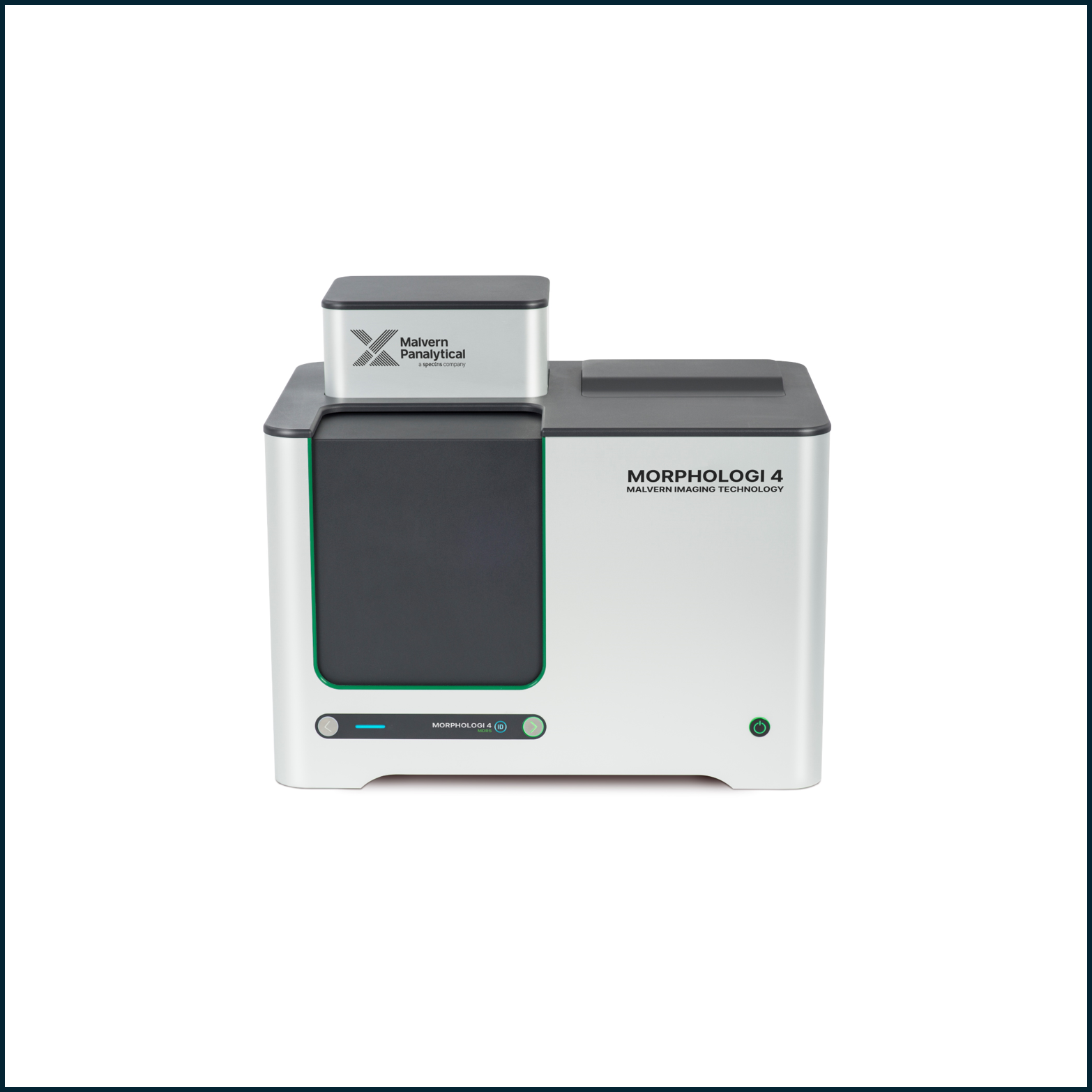
 400-875-0089
400-875-0089
 留言咨询
留言咨询
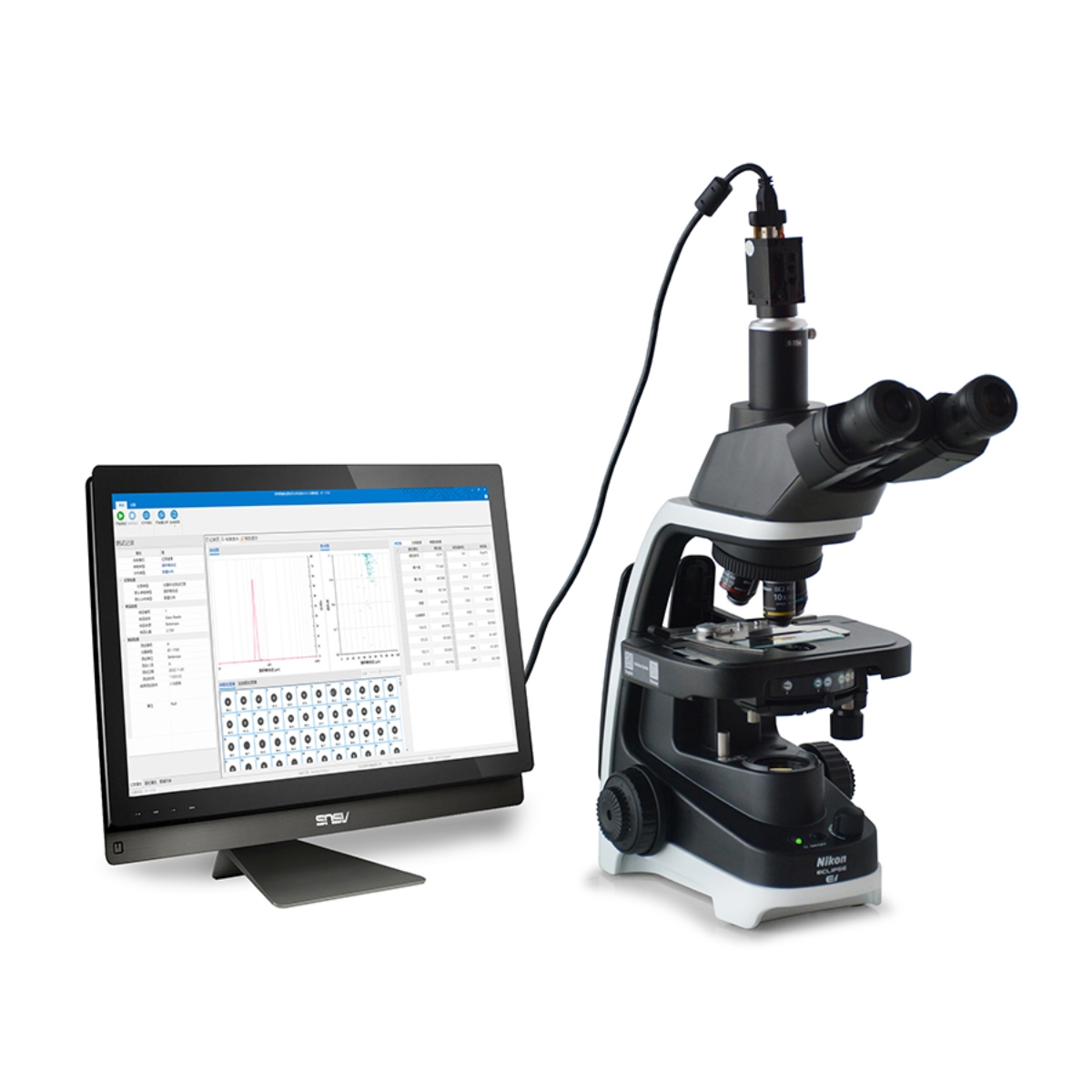
 400-606-0075
400-606-0075
 留言咨询
留言咨询

 400-606-0820
400-606-0820
 留言咨询
留言咨询



